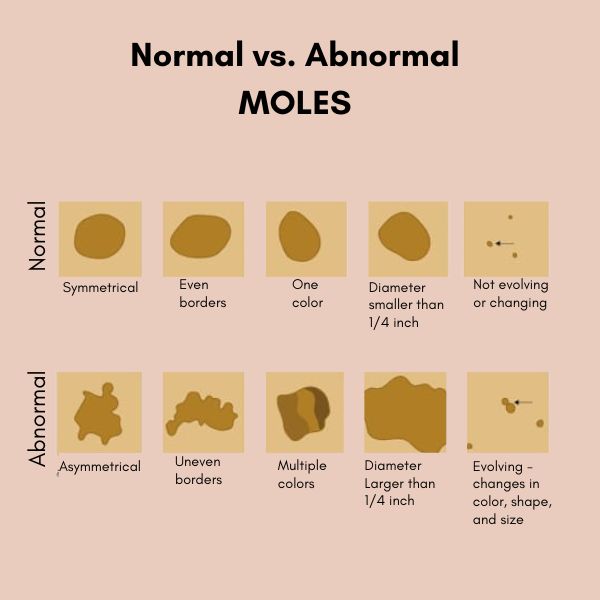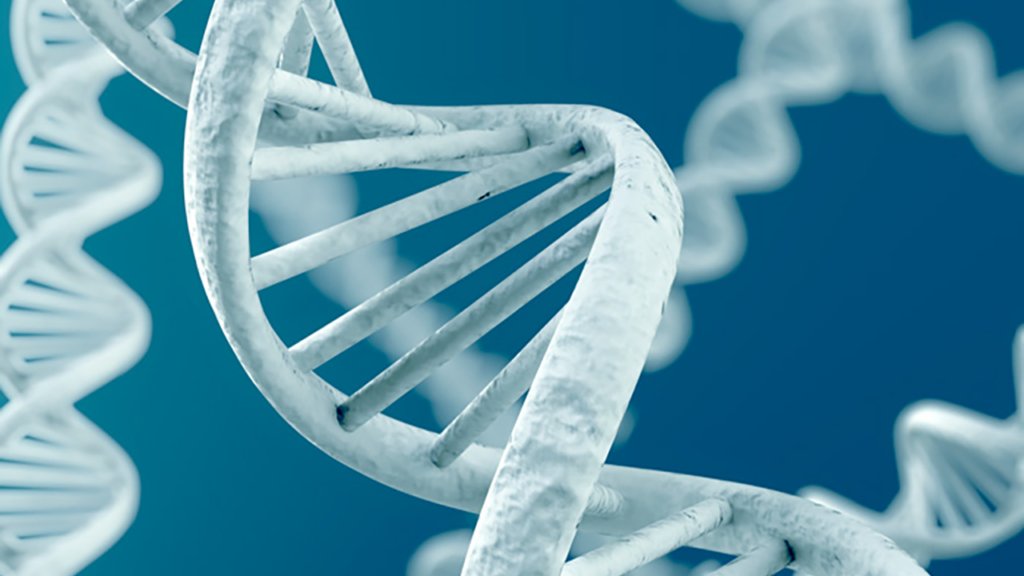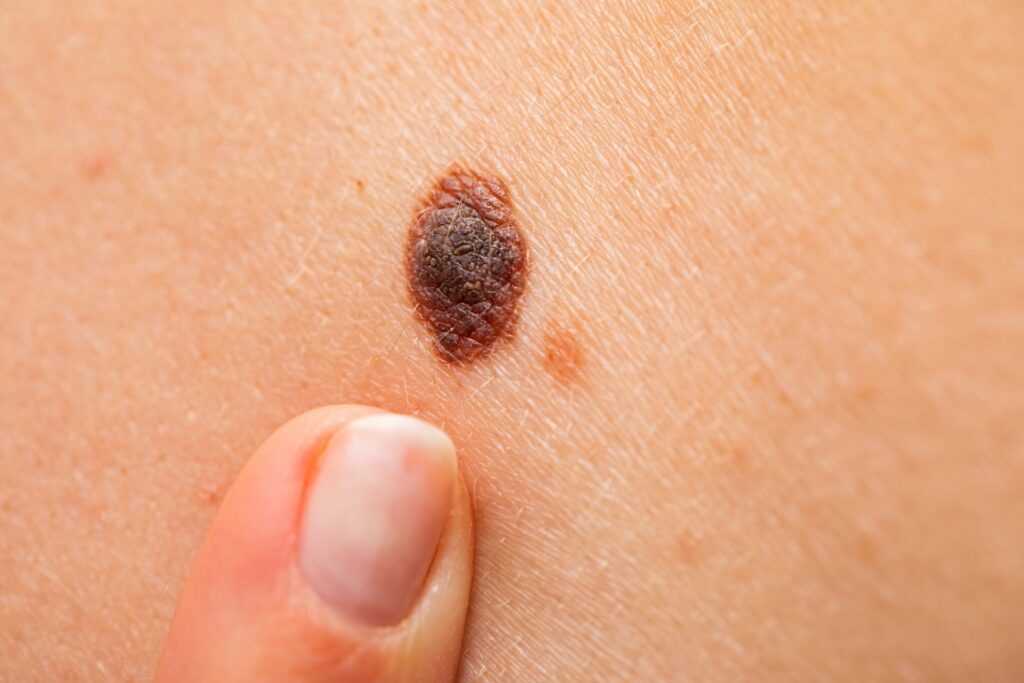Moles, those little spots that can appear anywhere on your skin, are usually harmless. However, when a new one pops up, it can raise questions and concerns about skin health. So, is it normal for a new mole to appear, what are the potential causes, and when should you be concerned?
Normal vs. Abnormal Moles

- Firstly, it’s essential to understand what normal and abnormal moles look like. Normal moles are usually round or oval, have a smooth edge, and are typically brown or black in color. They can be flat or raised and are generally smaller than the eraser of a pencil.
- On the other hand, abnormal moles may have irregular shapes, uneven edges, and variations in color, such as different shades of brown, black, red, or blue. They are often larger than regular moles and can evolve over time, changing in size, shape, or color.
Causes of New Moles
The appearance of a new mole can be attributed to several factors:
Genetics

- Family history plays a significant role in the development of moles.
- If your parents or siblings have many moles, you are more likely to develop them as well, including new ones.
Sun Exposure

- Prolonged exposure to ultraviolet (UV) radiation from the sun can trigger the formation of new moles.
- This is why areas of the body frequently exposed to sunlight, such as the face, neck, arms, and legs, are more prone to developing moles.
Hormonal Changes

- Hormonal fluctuations during puberty, pregnancy, or hormone therapy can lead to the appearance of new moles.
- These changes can stimulate melanocyte cells in the skin to produce more pigment, resulting in the formation of moles.
Age

- Moles can develop at any age, but they are more common in children and adolescents.
- As you age, the number of moles on your body may increase, but new moles appearing later in life should be monitored closely
When to Be Concerned
While most new moles are harmless, there are certain signs that indicate you should consult a dermatologist:
Rapid Growth

- If a new mole rapidly increases in size, especially within a few weeks or months, it could be a warning sign of skin cancer.
Irregular Borders
- Moles with irregular, poorly defined borders may be a cause for concern.
- Normal moles typically have smooth, even edges.

Changes in Shape or Elevation

- Any changes in the shape or elevation of a mole, such as becoming raised or developing a nodular appearance, should be evaluated by a dermatologist.
Itching, Bleeding, or Pain
- Moles that itch, bleed, or cause discomfort should be examined promptly, as these symptoms can be associated with skin cancer.

Conclusion
The appearance of a new mole can be normal, especially in response to genetic factors, sun exposure, hormonal changes, or aging. However, it’s crucial to monitor new moles for any changes in size, shape, color, or symptoms. If you notice any worrisome signs, don’t hesitate to seek professional medical advice. Early detection and treatment can significantly improve outcomes, especially when it comes to skin cancer. Taking proactive steps towards skin health can go a long way in maintaining overall well-being.




